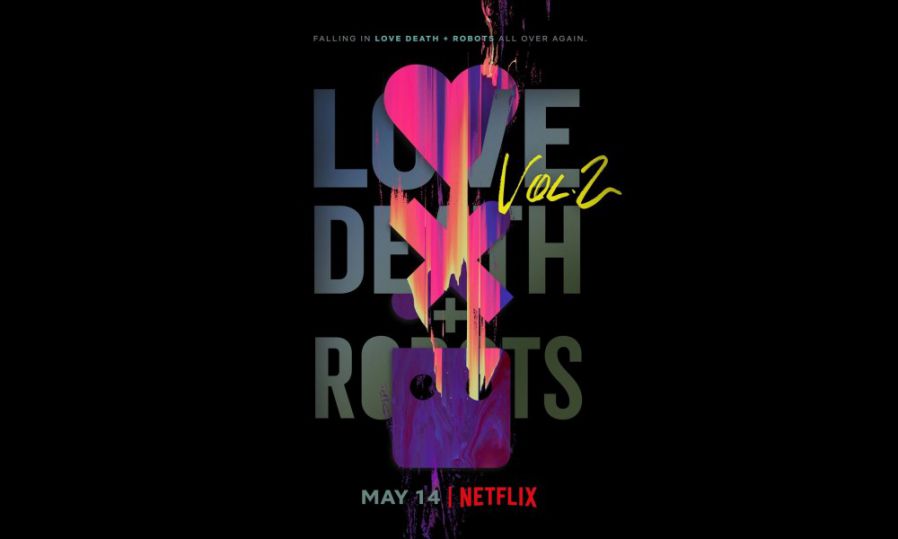‘Love, Death + Robots’ season two review
The animated anthology “Love, Death + Robots” lived up to its name during season two — perhaps a little too much. Audiences watch the show with a clear idea of what themes to expect, but what makes short anthologies exciting are the variety in the episodes and the opportunity to experiment with the main themes. This season felt a little repetitive in terms of plot and overall tone of some episodes, with some of them being easy to forget. The one thing that remains admirable in the show is the immense talent of the different animators involved, whose art gave the episodes a touch of uniqueness even when the plot failed to do so. Considering that only eight episodes were released, I expected each episode to stand out and surpass the greatest hits of season one, but despite some amazing attempts in the new season, it wasn’t as good.
That doesn’t mean the season isn’t enjoyable. Some episodes are worth re-watching, like “All Through the House” where director Elliot Dear gives a terrifying and comedic twist to Santa Claus. There hasn’t been a retelling as brilliant and bold as that episode, showing Santa as a nightmarish demon has bloody hands attached to its face and drools as it moves. Tropes like the cookies and milk are present in the episode, also the chimney from which Santa enters and leaves, but the twist is the added terror that the children experience after being judged by the beast. What does such a monster do to bad children? It is certainly an episode worth showing to younger cousins who still believe in Santa Claus and watch them freak out for a while.
Episode one “Automated Costumer Service” shows a glimpse of our modern nightmares but taken to an extreme. Nobody likes to have their issues “solved” by an automated voice through the phone and the episode exploits the idea by showing a future in which life-and-death situations are also handled by those machines. Household robots that appear harmless on the outside become murderous machines that serve as a warning of what might happen if we allow technology to solve even the most minuscule of details, convinced that they will always follow their programming. Classic sci-fi tale of evil A.I., starring a housewife who overcomes her fear and solves the crisis by herself, then rides into the sunset with a horde of murder-bots behind her. Talk about character development. But let’s not forget the star of the episode: Bill, the world’s most adorable animated dog.
The season’s guest superstar Michael B. Jordan starred as a space pilot who crash-lands near an asteroid belt with no company except a maintenance robot. Like in episode one, the robot malfunctions and becomes aggressive, determined to kill anything that moves. The realistic animation of the episode makes its horrific moments more intense than the average horror movie and Jordan’s desperate facial expression create enough tension that no dialogue is needed. It’s a simple plot about survival and its ingenious resolution comes with unexpected humor. Who would’ve thought that murder robots also get distracted by laser pointers they cannot catch?
Before discussing my favorite episode of the season, I must mention the stunning animation of “The Tall Grass” and the beautiful simplicity of its plot. When a train breaks down in the middle of nowhere, the only passenger on board takes a smoking break in the tall grass and becomes intrigued by the strange lights in the distance. The deeper he ventures into the endless field, the farther the train becomes, until all sight of is lost and the passenger finds himself alone — temporarily. Once again the show incorporates horror as the passenger is chased by ghoulish creatures determined to kill him. Despite its straightforward plot, the ending lets audiences wonder about the origin of such creatures, creating an effect in which viewers participate in the story by adding their own meaning to it. That’s something most shorts have the power of doing.
The final episode is a masterful retelling of J.G. Ballard’s story ‘The Drowned Giant’ which explores our capacity of dehumanizing another living being, and also ourselves, in that damaging process of apathy. When a dead giant washes up on the shore of a small village, the locals are fascinated by the gigantic corpse and regard it as a sensational thing to be exploited for their own desires and morbid curiosity. The giant resembles a human in every way except size, but that seems to be enough for people to treat is an object unworthy of dignity. The body is humiliated by the locals who use it as an attraction, and as it begins to decay naturally, it decays on a spiritual level and loses its identity. The episode doesn’t include the action or futuristic horror so characteristic of the series, but it addresses something far stronger: the cruelty of humankind. There was nothing futuristic about the episode but it was a perfect summary of our species. The body was hacked away one limb after another, until nothing recognizable remained, and the carcass became a decoration of the shore but also a souvenir for others. Body parts and bones were put on display as individual pieces that did not belong to a whole being —a being that was never truly seen for what it was, but only for how it could benefit the people around it.
‘Love, Death + Robots’ might be an anthology of short films that end abruptly and without a definitive conclusion, but that is a rich device that opens the door to much larger discussions about the human condition and the dangerous future that awaits us.





















